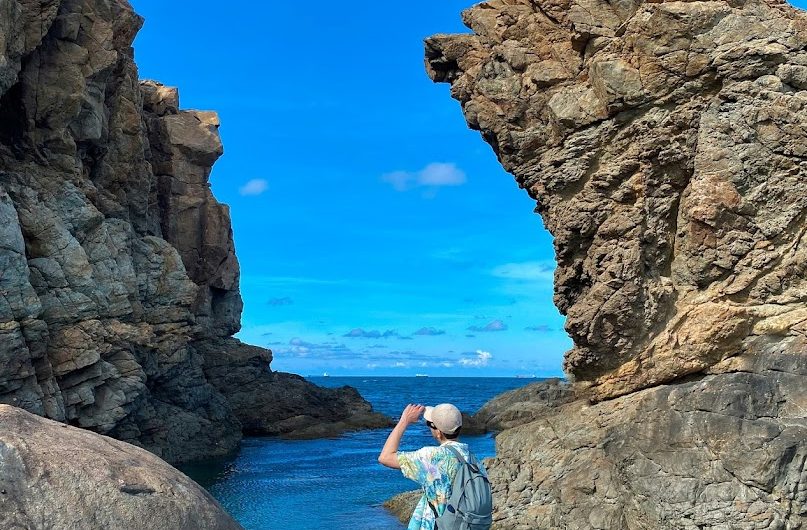Son Tra Peninsula always attracts tourists with its wild but stunning destinations, among which Nghê Cape (Mui Nghe) must be mentioned. It is not only the “coordinates” that young people seek to catch the most beautiful sunrise but also possesses a turquoise lake and pristine nature that many cannot resist. However, to enjoy the wonderful things at Nghê Cape(mui nghe), you must overcome a challenging stretch of road. Let’s explore together!
Some things to know about Mui Nghe (Nghe Cape) before exploring.
For many people, this is still a relatively new name. According to local residents, Mui Nghe (Nghe Cape) is an area with dangerous waters, but this pristine location always arouses the curiosity and excitement of adventurous travelers. It is called Mui Nghe (Nghe Cape) because there is a rock formation that resembles a sea lion. Its head faces the mountain while its body faces the sea. Over time, the image of this sea lion has become more prominent, like a unique masterpiece gifted by nature.
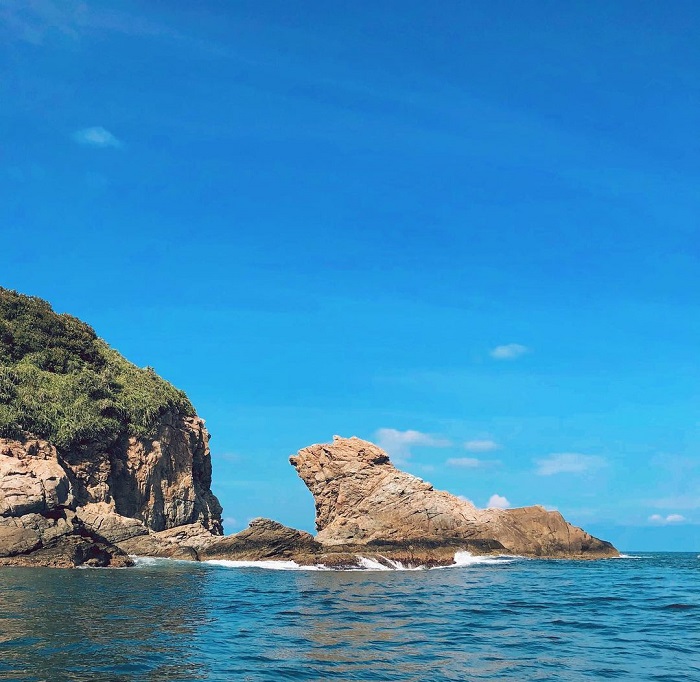
However, the tourist destination of Da Nang is not only attractive for this image but also for its surrounding features. There are boulders stacked on top of each other like a fortress that shields the pool inside, creating a small swimming pool with crystal-clear, emerald green water. The water here is so clear that you can see the bottom. Additionally, this is known as the place to catch the first rays of sun in Da Nang city. It promises to offer you a unique and exciting experience.
We provide car rental services with private drivers in Da Nang. If you want to explore Mui Nghê or many other destinations, you can book a trip now. Our team of professional drivers who are familiar with the roads will help you have the best trip.
The best time to explore Mui Nghe (Nghe Cape) Son Tra.
Exploring Mui Nghe (Nghe Cape) is like exploring Rang Beach or other beaches located on Son Tra Peninsula. It is not always convenient for a trip here, so you should choose the most suitable time to facilitate your transportation and activities.
According to the experience of those who have traveled here before, Da Nang has a dry season and a rainy season. If you have flexibility in your schedule, you should plan your trip during the dry season (from February to September every year). At this time, the weather is sunny, with little rain, clear skies, and beautiful beaches, making it easy to travel around and enjoy the natural beauty here. Avoid traveling during November and December, as this is the peak of the rainy season, and the slippery roads can be very dangerous.
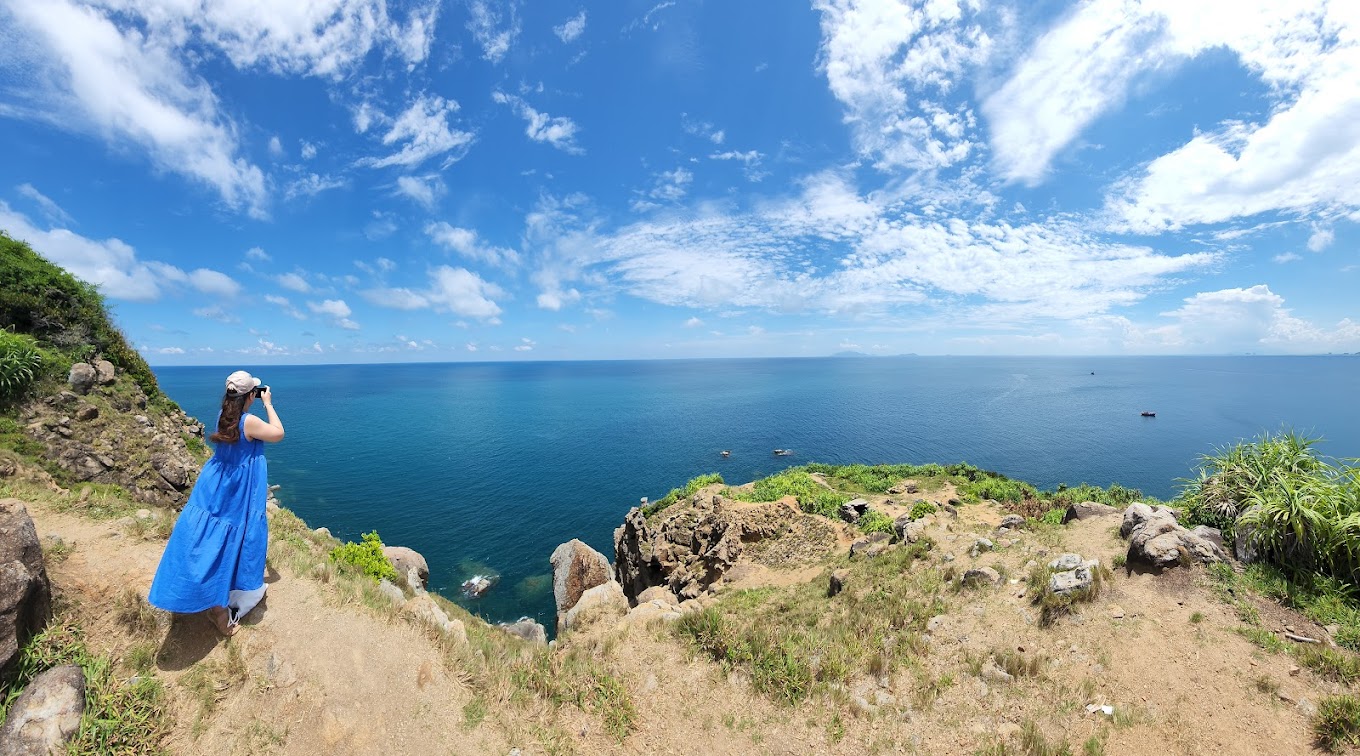
If possible, wake up early to catch the first rays of sunshine at Mui Nghe (Nghe Cape) (from 4-5 am). The sunrise here is said to be breathtakingly beautiful, and the sunset in the evening will not disappoint.
Location and directions to Mui Nghê.
Determine coordinates.
The landmark is located precisely in the southeast of Son Tra peninsula, one of the three mountains closely associated with the peninsula’s long history of formation. This is a sacred land chosen by the lord of the green forest to stop and rule. Mui Nghê is about 17 km away from the center of Da Nang city, taking about 35 minutes by car.
Which route should you take?
According to experienced travelers to Son Tra peninsula, the road to Mui Nghe (Nghe Cape) is quite difficult. From the city center, you can follow the coastal road of Vo Nguyen Giap, also known as Hoang Sa, to climb Son Tra mountain. Pass through Linh Ung Pagoda, then turn into the thousand-year-old tree path. After this section, you will enter the forest road to get to Mui Nghê.
You will see a small trail gradually entering the forest. This section is very steep, but there are already ropes tied, so you can hold onto them to go down. After the steep section, follow the trail into the forest for about 15 more minutes, down a steep slope to the sea and then walk for about 5 minutes across an empty dirt beach to reach the destination.
What is the appropriate means of transportation?
As mentioned, unlike the beaches in Son Tra, the road to Mui Nghe (Nghe Cape) is more difficult. Therefore, to travel to this destination, it is best to use a motorbike to get around. Riding a motorbike can navigate through small roads, is comfortable, more proactive, and can admire the scenery along the way and return whenever convenient. Of course, you can still choose a car or taxi, but it is not as convenient.
Choosing a private car from Da Nang to Son Tra peninsula is also a popular choice for many international tourists, with the convenience and scheduling of transportation, so this is a favorite means of transportation for travelers.
What is interesting about exploring Mui Nghe (Nghe Cape) in Da Nang?
Nghê Cape is increasingly attracting many visitors, especially young people who come to explore and experience it. Here you will immerse yourself in nature, clouds, sea breeze and enjoy many interesting things.
Explore the heroic historical traces.
When you follow the path down to the sea before reaching Nghê Cape, you will come across historical traces of the resistance against the US and France in the 1960s. Here, there are still some intact enemy bunkers and secret tunnels. Although partly destroyed, they still have a fairly solid shape. The entrance to the bunker is almost sealed, with only half covered in weeds. This is considered a fighting tactic and defense of the enemy.
Many soldiers of our army died here during the war, but eventually the enemy was defeated. There are many rumors that Nghê Cape is still the home of wandering spirits, so only those who are really brave come here. If you want to learn about the ancient exploits and the battles of our army, do not miss this place.
Admire the beautiful sunrise.
It would be great if you could spend a day here, stay overnight, or come early to admire the sunrise at Nghê Cape. In the early morning, when the mist gradually disappears, the scenery here is like “lifting the veil,” the first rays of sunlight shining on the rocks. You will see it as a pristine, poetic, and extremely sparkling natural painting. And when the sun rises, the majestic sea lion shape becomes clearly visible on the vast sea surface, very attractive.

Explore the special deep blue lake.
One thing that perhaps arouses the curiosity of anyone who sets foot here is the special deep blue lake. The lake is surrounded by rocks, and every time the tide rises and falls or is affected by the waves, it still retains a part of the sea, creating a natural lake in the middle of the sea.
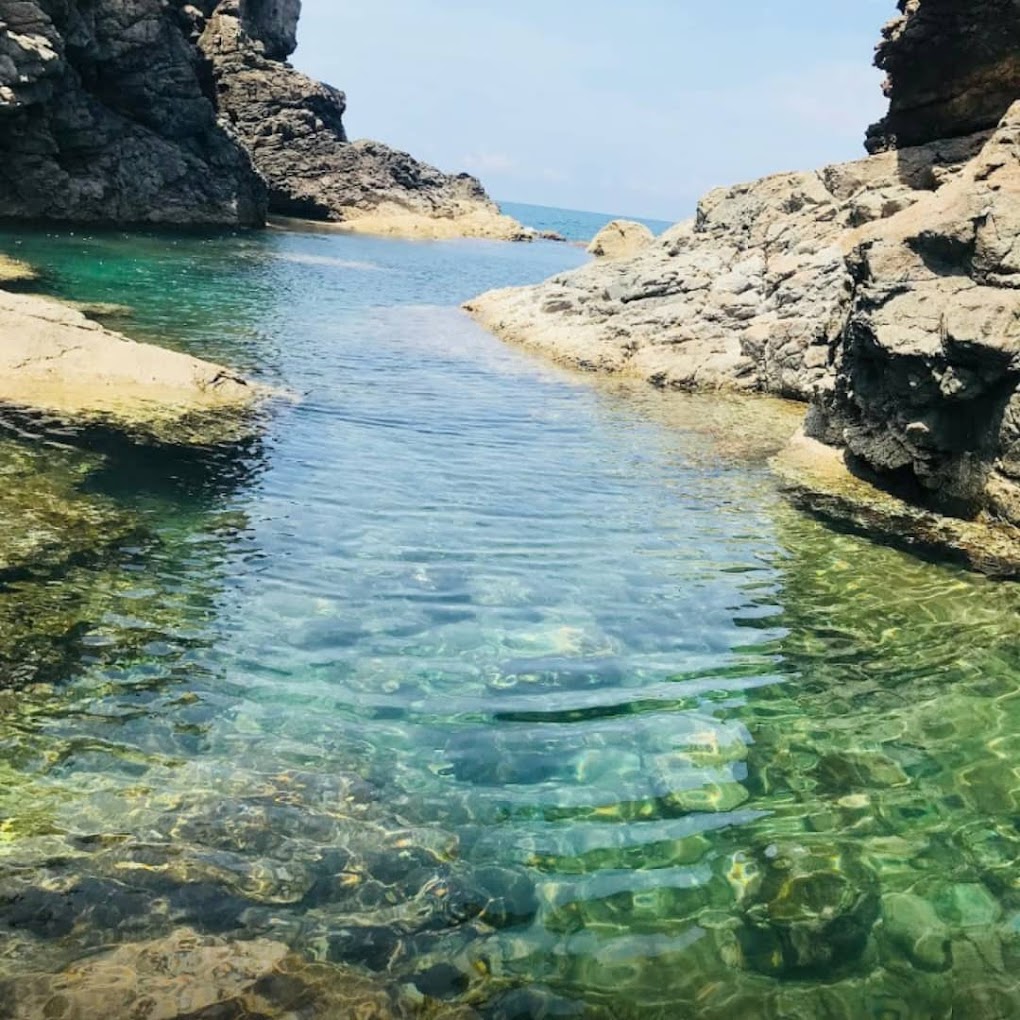
The water in the lake is extremely blue and clear, cool, and transparent enough to see the fish swimming. Surely, when you see it, you will want to jump right in and immerse yourself in this lake. For those who are afraid of the waves, this is the safest and most ideal place, just like you are soaking in a mineral spring.
Camping and outdoor activities by the beach.
For young adventurers who love to explore, Mui Nghê can be a great camping spot. There is an empty space by the beach that is suitable for setting up tents overnight. You can bring your own tent, sleeping bag, and necessary food and invite your friends to camp here. When night falls, you can cook, sing, light a campfire, or lie down to admire the starry sky, listen to the sound of waves and the wind, which is very exciting.
An ideal place for taking photos.
Anyone who has the opportunity to visit and enjoy this amazing scenery will undoubtedly want to capture those wonderful moments. The sunrise or the emerald green water scene combined with a long and wide super chill nature will surely help you take impressive pictures that cannot be found anywhere else. Female visitors can also have countless opportunities to take Instagram-worthy photos.
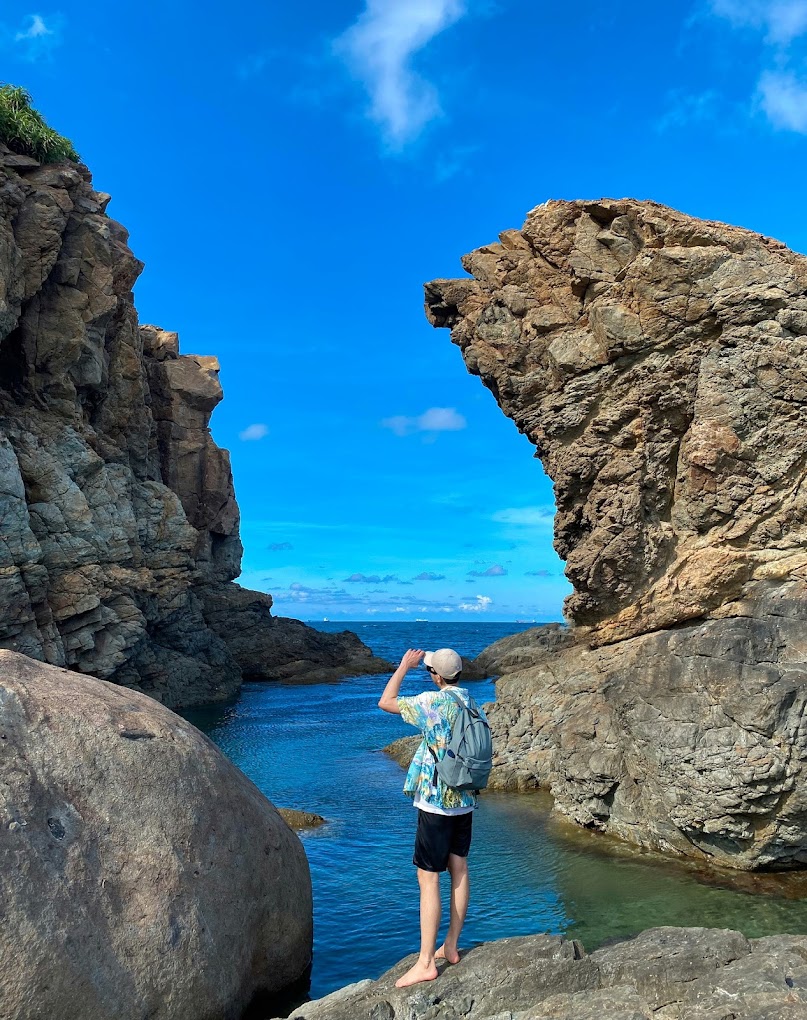
In addition, you can also organize fishing, snail catching, or join local fishermen to experience a day of fishing, immerse yourself in the vast ocean, release yourself in the picturesque nature, and catch various seafood by yourself. It will definitely be an unforgettable memory on your journey of traveling to Mui Nghê, Da Nang.
Experience of visiting Mui Nghe (Nghe Cape): What to eat and where to stay overnight?
As an undeveloped destination, tourism services in this area are not yet fully established. That’s why many visitors are unsure about what to eat and where to stay overnight. DanangPrivateCar.com’s has some suggestions for you:
Accommodation options for overnight stays.
As it is quite far from the city center, the only option for visitors who want to stay nearby is to camp overnight. However, this can be dangerous if traveling with a family, especially with elderly people and children. Instead, visitors can return to the city center to rent a hotel room.
What to eat and where to eat?
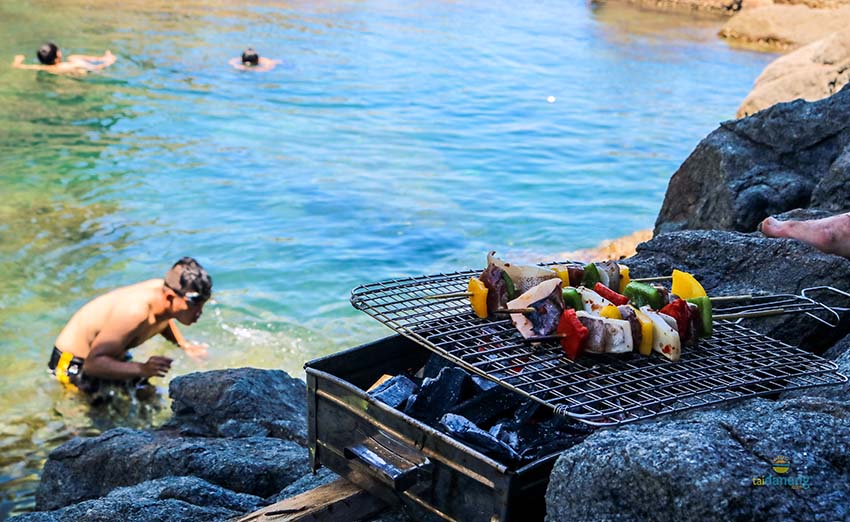
For food, visitors can bring their own food to organize parties right on the spot, such as pre-prepared food or fresh food for grilling and BBQ. But if you want to try Danang’s specialties such as Quang noodles, fish cake noodles, pork and rice paper rolls, crab soup cakes, or seafood, head to the more populated areas. There are many restaurants and eateries to choose from at reasonable prices.
Additional tips for exploring tourist destinations near Mui Nghe (Nghe Cape) in Da Nang.
Son Tra Peninsula is one of the famous names in Da Nang tourism, where many attractive destinations converge: from nature, mountains, seas to temples, relics, etc., allowing tourists to explore to their heart’s content. Therefore, when you visit Nghê Cape, you should also spend more time exploring nearby spots.

On the way to Nghê Cape, you can visit Linh Ung Pagoda located right on the Hoang Son road leading up to the peninsula. This is one of the largest pagodas in Central Vietnam with the highest Buddha statue in Southeast Asia (67m). Or discover the Thousand-Year-Old Banyan Tree along the way down to Nghê Cape. And if you have time, conquer Ban Co Peak, Rang Beach or other beaches, for example…
Notes for exploring Mui Nghe (Nghe Cape) on Son Tra Peninsula, Da Nang.
- The sea urchins here are very sharp and pointed, and if you get stung, it will be very painful. There are many oysters clinging to the rocks that can cut into your legs or arms. You should be extremely careful while swimming or trying to fish.
- It is still quite deserted here, so there will certainly be no rescue team. When playing, you have to protect yourself. It is best to only swim in the water area and leave before 5 pm (if you do not camp overnight).
- If you don’t know how to swim, remember to bring a life jacket or buoy. You should also bring a fishing rod because there are many fish here, and the catch can be used for cooking right on the spot.
- For those who camp overnight, remember to bring enough tools such as tents, firewood, food, etc. But before leaving, remember to clean up all the trash to protect the environment.
Desolate but beautiful, desolate but attractive, Mui Nghe (Nghe Cape) is truly a wonderful destination that tourists should not miss, especially for adventure enthusiasts. Let’s leave behind the hustle and bustle and return to the sea to relieve stress and fatigue. You will surely not forget the beauty and many exciting experiences here.

